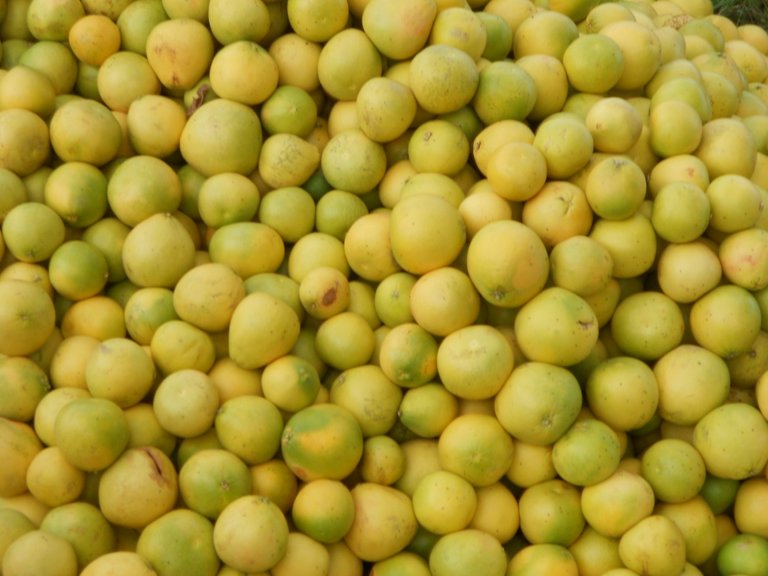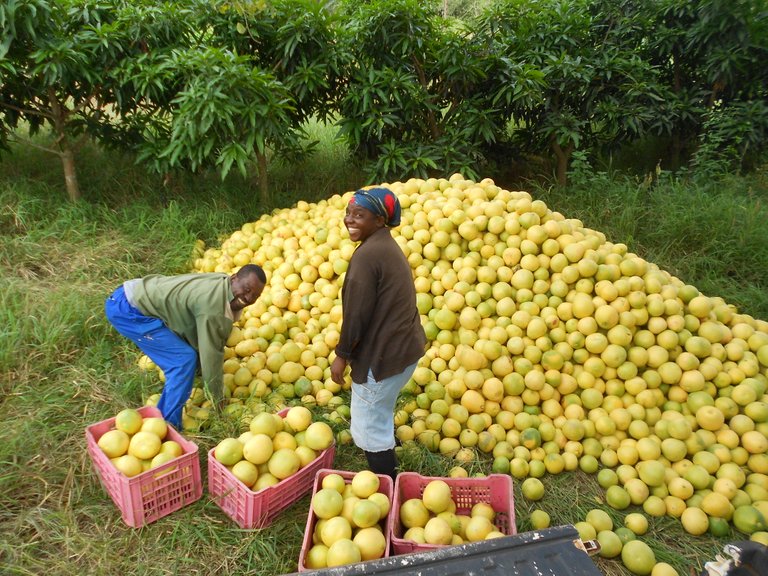Preparing for a Long Year Ahead

Farm-life can be a lot of fun and games but just like any other job it goes with extreme stress levels. And proper planning makes up a great deal of your everyday life. And at this stage it looks like it will be an extremely tough year ahead.
Well we are barely out of our yearly rain season and we have already received water shortage warnings, this will mean that we are rolling over into another year of this progressive drought. This will not only mean that the already struggling crops will suffer even more, but it also means that the animals will have to endure extreme conditions.
In the picture above, you can see our farm dam - yes that patch of dry land used to be a lovely farm dam. The petrified tree in the center used to be halfway under water at all times even after the rainy season had come and gone, now it is just a barren patch of land, this is certainly a good indication of the year ahead.
The best we can do now is to stock up on supplies and try to prime the animals as best we can for the year ahead this will be the only way to give the animals the best chance of survival.
Priming the animals simply means that you need to get them as fat and healthy as you possibly can before the hard times strike, and this entails supplementing their diets with healthy nutrient rich foods that will become very scares over the next few months. One such food is citrus.And if you have ever wondered what 8 tons of citrus looks like you can check it out on the picture below.
This was a load of Pompelmoes/Jaarlemoen (more commonly known as Honey Pomelo, or Shaddock) that I recently carted to the farm with the help of my two workers seen in the picture below. These fruits were loaded from the pile into lug-boxes (the pink crates that can be seen on the picture) and then loaded onto the pickup. Once on the farm, these fruits were processed into animal feed. this meant chopping the fruit up into small enough pieces for the animals to eat. A great deal of the fruit was chopped up and set out to dry for later use, but we also processed a bit of the fruits for household use.
In that case the fruit were supremed and cooked into jams and chutneys that has a longer shelf life. Some of the fruits were processed into juice or juice concentrate and some of the fruit segments just frozen whole.
Once an entire load on the pickup was processed we would go and collect the next, it took us quite a few trips in order to get the lot of the fruit back to the farm and 8 Tons might sound like a huge amount of fruit, but it is really not if you take into account that this is a part of food-stock that will need to feed about 30 goats for the next 7-9 months.
These fruits are all market excess, or fruit that did not make the size grade for the export market, meaning that they are simply too big or too small, normally these fruits will then be sold locally, but in this case the manager of the packaging plant sent us a load as part of a prior bartering arrangement.
This was also the case with some dried mangoes that managed to find its way too the farm:

That right there is one ton of dried Mango (just in case you ever wondered what it might look like.) It was also a ton of hard work waiting to happen, as these fruits again were re-packaged into a usable sizes, and frozen for later household use, and the rest was snipped up into more manageable pieces to be worked into the animal feed at a later stage. So far it has been all but easy trying to get ready for the months that lie ahead, but without these necessary steps the animals would have no chance of enduring the drought.
And the sad thing is that with a drought more often than not sickness and pestilence follows, and this is something else that needs to be prepared for, and one way that I started doing this was by making natural insecticides to keep the insects away from already weakened crops - These sprays will not be used on a commercial level, and are at this stage just for the food gardens - but it has proven itself of great use thus-far.
For making this insecticide I have taken a few kilograms of excess chilies from the Serrano crop that I had planted late last year, and boiled that into a tea along with whole cloves of garlic, thereafter this mixture is set aside too coll and then goes through a natural fermentation process for a few days. This mixture was then decanted into smaller spray bottles and are ready for use.
Now if I can give you any advice when you want to attempt making this, it would be: DO NOT COOK THIS STUFF INDOORS!!
It might sound innocent enough...
"just a few chilies and garlic how bad could that possibly be?"
My answer to that is simply
BAD, REALLY REALLY BAD
Not only does it leave a lingering bad smell, but that very same bad smell also has a similar effect on people as pepper-spray would... But wait there is more, after this mixture has fermented, it really starts smelling like shit, and I mean like actual shit. It is certainly not the most fun insecticide that I have worked with, but it works well on the plants, and it beats spraying harsh and expensive chemicals (that often doesn't smell much better) in order to get the same effect.
All the prep-work is still a very slow process, and I do not think that you could ever be completely prepared for whatever the future holds, but at the end of the day we need to make the most of what we have.



I've included this post in my weekly curation PALnet edition!
Hi, @breezin!
You just got a 0.39% upvote from SteemPlus!
To get higher upvotes, earn more SteemPlus Points (SPP). On your Steemit wallet, check your SPP balance and click on "How to earn SPP?" to find out all the ways to earn.
If you're not using SteemPlus yet, please check our last posts in here to see the many ways in which SteemPlus can improve your Steem experience on Steemit and Busy.